In the Chouf Mountains, Beiteddine Palace offers an invitation to step into another time. The sound of fountains greets you as you enter courtyards framed by stone walls. Arched doorways lead to rooms where history lingers in every carved pattern, and terraces open onto views of hills that stretch beyond the horizon.
Built in the late 18th century, the palace has seen Lebanon through centuries of change. Today, it stands as a space where culture, memory, and daily life meet.
This guide is your map to understanding Beiteddine Palace — I'll take you from its beginnings to the details you need to effectively plan a visit. Discover what to see and why this place remains at the heart of Lebanon’s story.
Disclosure: This article contains an affiliate link. If you make a purchase through this link, I may earn a small commission at no extra cost to you. Thank you for supporting my blog!
Why Beiteddine Palace Is a Must-See
When I think of Beiteddine Palace, I imagine walking through its intricate stonework and archways, each telling the story of Ottoman influence meeting Lebanese craftsmanship. Every courtyard and corridor reflects a time when design was a language of power and artistry.
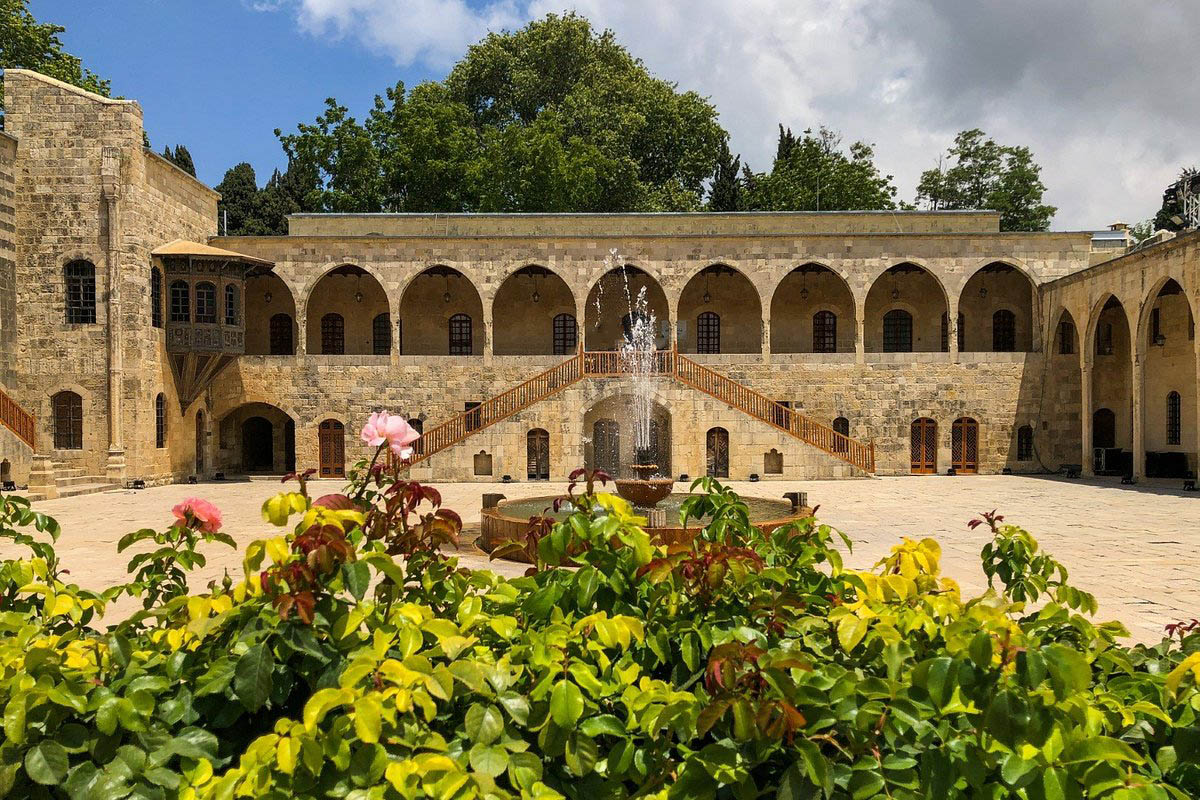
This is a living piece of history. The palace bridges centuries, serving as a stage for cultural festivals, art exhibitions, and moments that celebrate Lebanon’s enduring heritage.
To me, visiting Beiteddine is a chance to connect with the rhythm of the past while standing in the present. From its grand reception halls to the quiet gardens, the palace offers a glimpse into Lebanon’s identity — its creativity and ability to blend influences into something entirely its own.
The History and Significance of Beiteddine Palace
Beiteddine Palace, in my opinion, is a potent symbol of Lebanon’s historical and cultural evolution. Its architecture, a blend of Ottoman, Mamluk, and local influences, reflects the artistry and power of a bygone era, while its role as a cultural hub keeps its legacy alive today.
Who Built Beiteddine Palace, and Why?
In 1788, Emir Bashir Shihab II, ruler of the Mount Lebanon Emirate, began constructing what would become one of Lebanon’s most iconic landmarks.
Situated in the Chouf Mountains, the site was originally a Druze hermitage, known as Beit ed-dine or the "House of Faith," which inspired the name of both the palace and the nearby village. Over three decades, Emir Bashir's vision took shape, blending Ottoman-inspired architecture with elements of Lebanese craftsmanship.
The palace's design emphasised both grandeur and functionality, with features like mandaloun balconies, mosaic floors, cedar wood ceilings, and marble-inlaid courtyards. Beyond the main residence, the complex included a lavish guest wing, private Turkish baths, and lush apartments designed for the emir’s personal retreat.
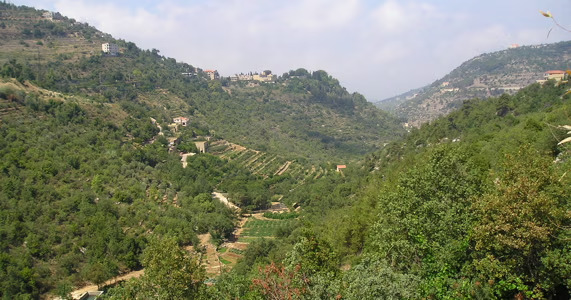
One striking tale — though likely fictitious — claims the palace’s Italian architect had his hands severed to prevent him from replicating its beauty elsewhere.
Beiteddine Palace has had a turbulent history. After Emir Bashir’s exile in the mid-19th century, the palace was repurposed by the Ottoman authorities. By the 20th century, it had become the official summer residence of Lebanon’s presidents.
During the Lebanese Civil War, the site sustained damage but was restored by the Druze militia, who later returned it to the government in 1999.
Today, parts of the palace remain in use as a summer retreat for the president, while other sections are open to visitors like you and I, offering a window into Lebanon's rich past and a glimpse of the craftsmanship and ambition that shaped its creation.
A Blend of Architectural Marvels
Beiteddine Palace showcases a deliberate fusion of Ottoman sophistication, Mamluk intricacy, and Lebanese craftsmanship.
As you explore, you'll notice details like mosaic floors that shimmer in the sunlight, carved wooden ceilings that tell intricate stories, and arched windows that frame panoramas — each element a deliberate effort to create harmony between function and beauty.
The expansive courtyards, with their symmetrical designs and central fountains, showcase the distinctly Ottoman flair for order and grandeur — a detail that might go unnoticed without explanation. The geometric mosaics lining the floors and the domed ceilings bring in Mamluk precision and ornamentation, adding layers of craftsmanship that could easily be overlooked by a novice.
Then there’s the Lebanese touch: the local stone and windows framing the mountains, as if the landscape itself was always meant to be part of the design.
It’s a mix of influences that makes you pause and appreciate just how much history is built into every corner.
Historical Importance
Beiteddine Palace is layered with stories. During its time, it served as the political seat of Emir Bashir II, where important decisions were made within its grand halls — likely accompanied by plenty of elaborate coffee rituals.
Its strategic location in the Chouf Mountains wasn’t just for the views; it provided a vantage point to oversee the region and, when necessary, to protect it.
Then there’s the role it played much later in history. During the French Mandate, the palace was repurposed as a government building. Imagine those intricate Ottoman courtyards being walked by officials and clerks — maybe not exactly what the Emir had in mind when commissioning it.
Today, Beiteddine Palace is a stage for Lebanon’s cultural scene. The Beiteddine Festival transforms its courtyards into an amphitheater for performances that range from classical music to contemporary art.
It’s remarkable how a space once rooted in power now thrives as a hub for creativity, connecting Lebanon’s past with its evolving identity.
Beiteddine Festival and UNESCO Recognition
Beiteddine Palace transforms into a cultural epi-centre every summer (typically between late June and early August) with the Beiteddine Art Festival, a celebration of music, art, and performance set against the grandeur of its courtyards.
Imagine sitting under the stars in a space that has witnessed centuries of history, now alive with the sounds of international orchestras, renowned singers, ballerinas, and contemporary art installations. It’s a rare experience!.
The festival draws locals, international visitors, and artists alike, creating an atmosphere that’s both festive and reverent. From the moment you step into the courtyard lit with warm, golden lights, you’re part of a celebration of Lebanon’s creativity.
It’s this ongoing cultural significance, alongside the palace’s architectural and historical value, that contributed to its recognition by UNESCO as part of Lebanon's tentative World Heritage Sites list. This nod acknowledges the palace as a living, breathing part of Lebanon’s identity.
Whether you’re an art enthusiast, a history buff, or simply someone looking for an unforgettable evening, the Beiteddine Festival is a highlight!
Exploring Beiteddine Palace: Key Highlights
Beiteddine Palace is a mosaic of experiences. Think sprawling courtyards, rooms adorned with stunning mosaics, and stunning views.
The Palace unfolds in layers. As you step through Al Midan, the grand gates welcome you into a vast courtyard bordered by the Madafa, where guests were once housed.
A graceful double staircase guides you into Dar Al Wousta, the palace's inner court. Beyond a richly carved doorway lies Dar Al Harim, home to the Emir’s private apartments and reception halls, possibly the most elaborate part of the palace.
Now, let’s explore some of the highlights in detail.
1. Dar al Midan (Courtyard)
The Al-Midan Courtyard is the grand entryway to Beiteddine Palace that greets you, an expanse of stonework that radiates both symmetry and scale. Once the stage for gatherings and ceremonies (such as jousting talents), it’s easy to imagine the bustle of dignitaries, musicians, horsemen, courtiers and guards that filled this space.
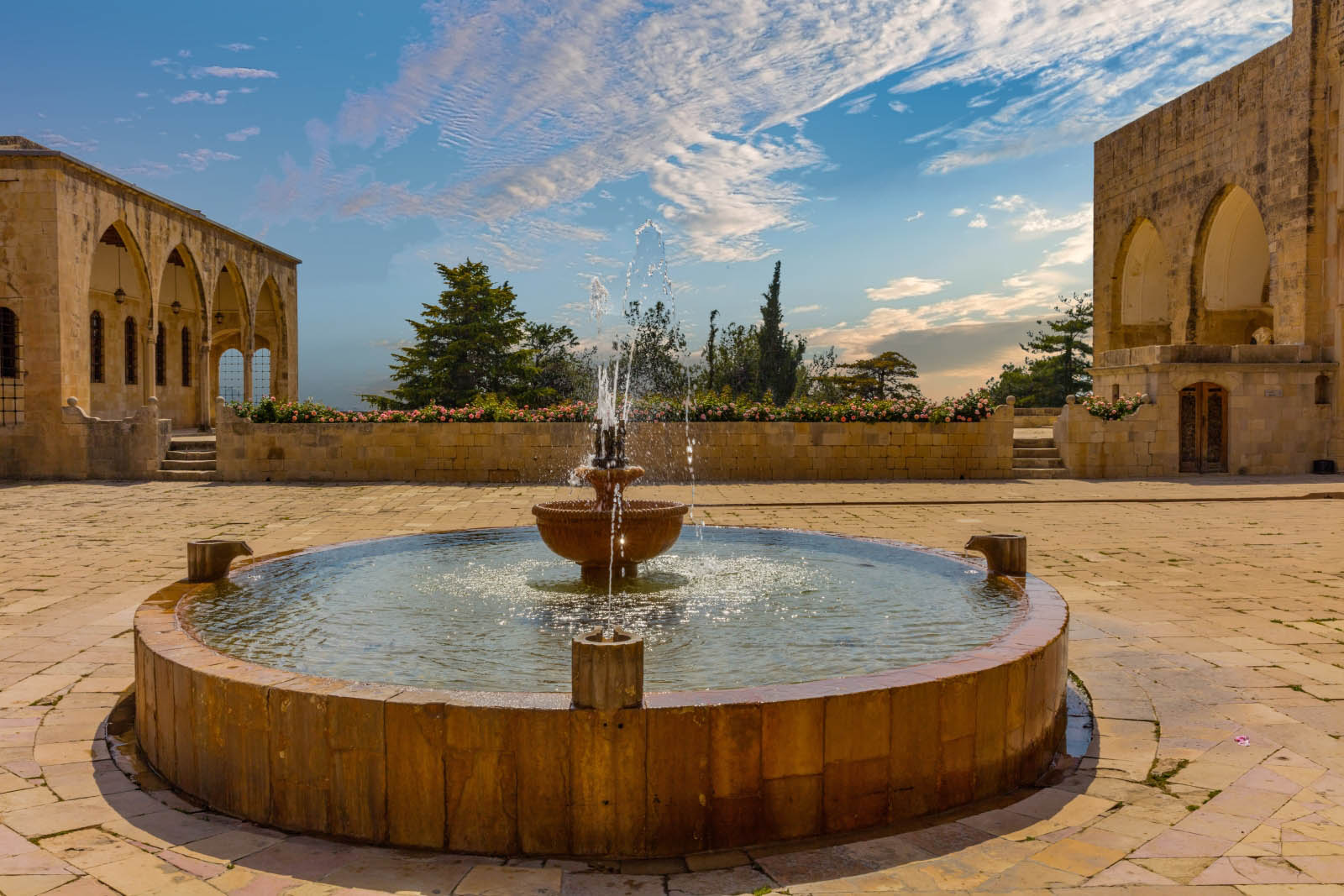
At its heart, a central fountain quietly gurgles — a timeless feature of Ottoman design meant to evoke peace and reflection.
As you wander through, the sunlit stone underfoot and the intricate carvings around you make it feel like it’s an open-air gallery.
2. Dar al Wousta
Dar el Wousta, or "The Middle House," is the centrepiece of Beiteddine Palace, seamlessly blending grandeur and intimacy. This part of the palace served as the central living quarters, and its design reflects a balance between public opulence and private retreat.
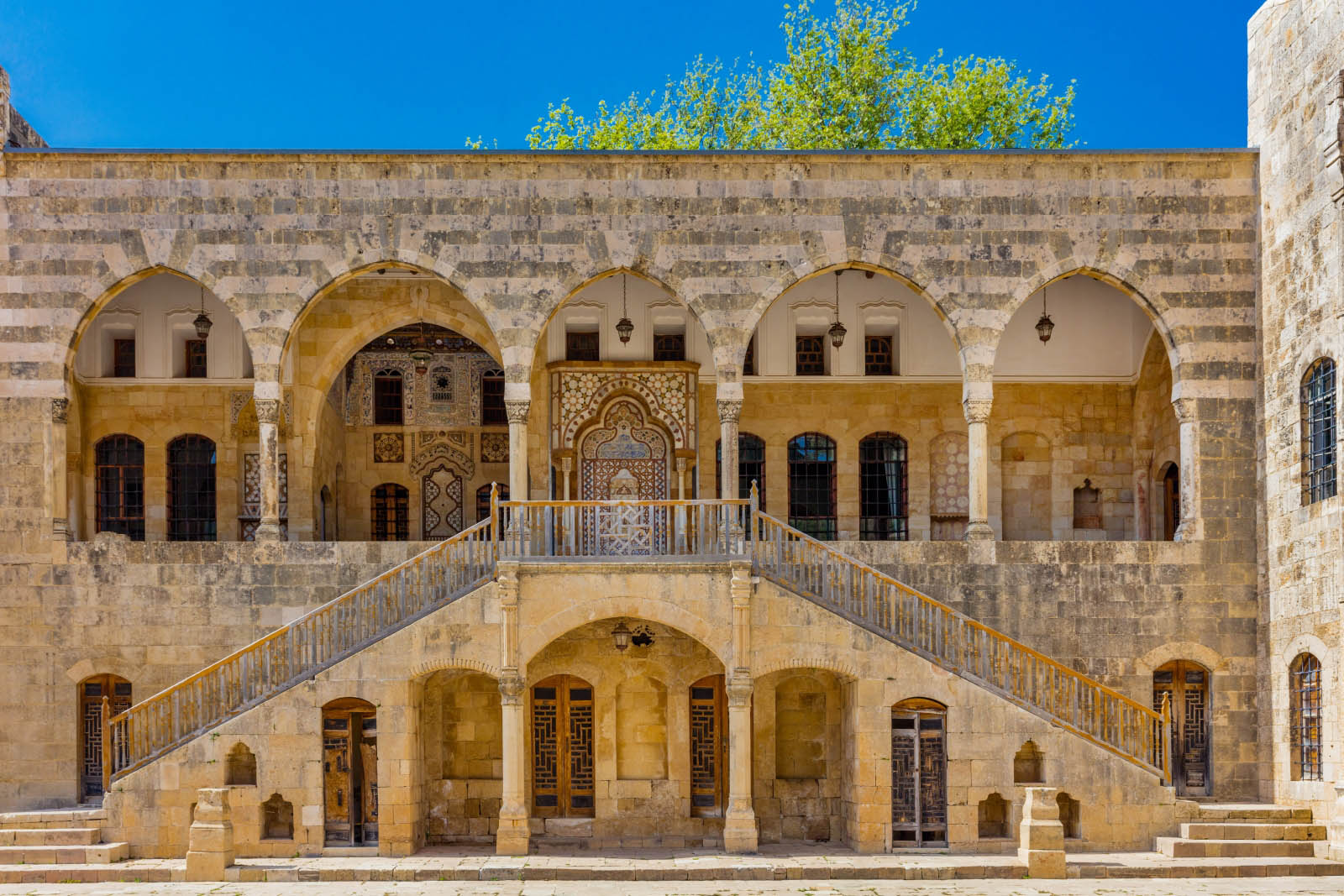
Step inside, and you’ll find yourself surrounded by mosaic-tiled floors and carved wooden ceilings. The rooms are arranged around a courtyard, with arched windows that frame views of the palace gardens and the Chouf Mountains beyond — a design that feels both practical and poetic.
It’s a glimpse into the daily life of those who once called Beiteddine home.
3. Dar al Harim
At the far end of the courtyard, Dar El Harim served as the emir’s private domain, combining elegance and practicality.
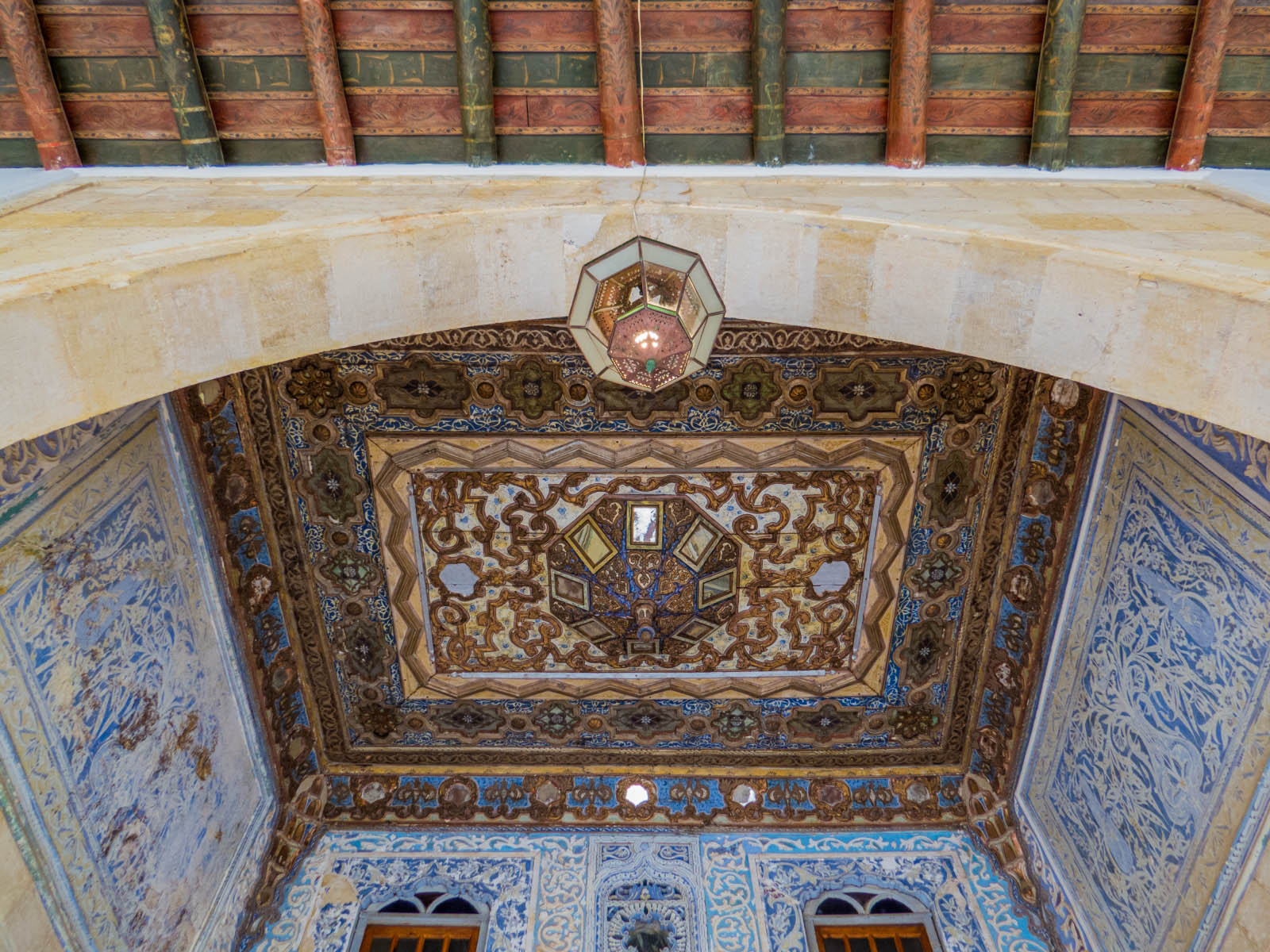
Its grand façade leads to the reception wing, where guests were welcomed in the salamlik, a two-tiered hall adorned with mosaic floors, carved marble, and inscriptions like one declaring: "The homage of a governor towards God is to observe justice, for more than a thousand months of prayer."
Here, Emir Bashir dispensed justice and oversaw the affairs of his emirate.
The Upper and Lower Harems housed the private apartments of the emir and his family, centred around a peaceful courtyard enclosed on all sides. Nearby, bustling kitchens prepared meals for hundreds daily, catering to the needs of guests and residents.
From the balconies of Dar El Harim, the sweeping views of the Chouf Mountains are nothing short of spectacular, a fitting backdrop for this intimate and regal corner of the palace.
4. Beiteddine Palace Museum
Tucked within the old stables, the Museum's collection ranges from Byzantine mosaics to ancient pottery.
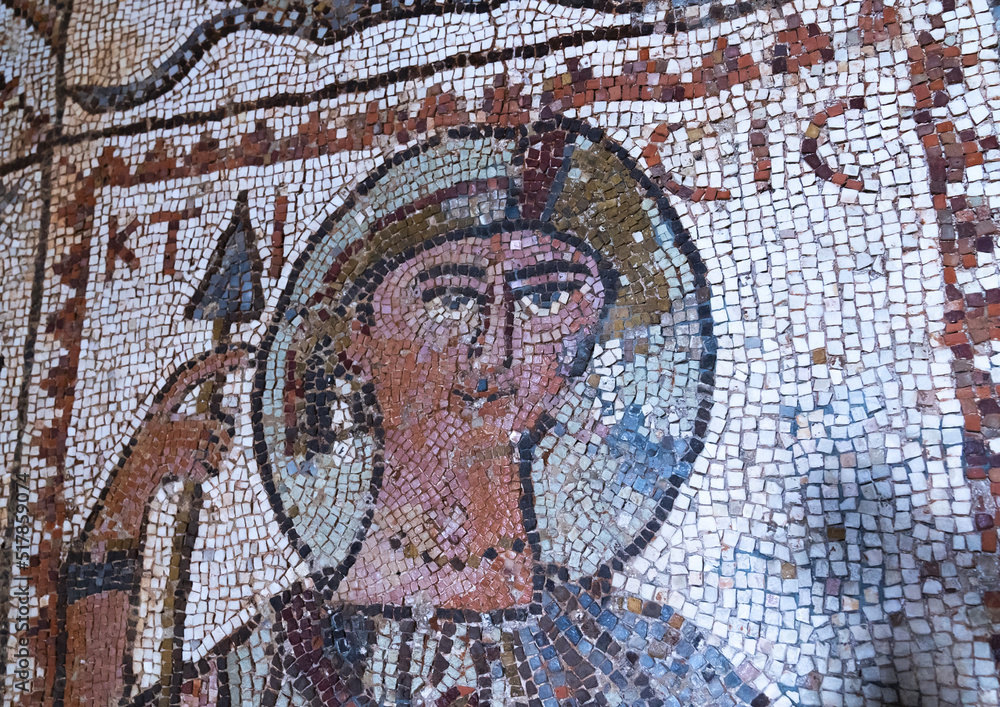
One standout is the series of mosaics depicting mythical creatures and intricate patterns, uncovered from the ruins of ancient Byzantine churches. These works, vibrant even after centuries, showcase a level of artistry that’s hard to ignore, even for those who don’t usually linger at museum exhibits.
The museum is thoughtfully curated and wandering through it is like a treasure hunt.
5. The Lush Palace Gardens
The gardens at Beiteddine Palace are a sanctuary of calm. Terraced expanses of greenery spill down the hillside, punctuated by citrus trees, fragrant flowers, and ancient fountains that trickle softly in the breeze.
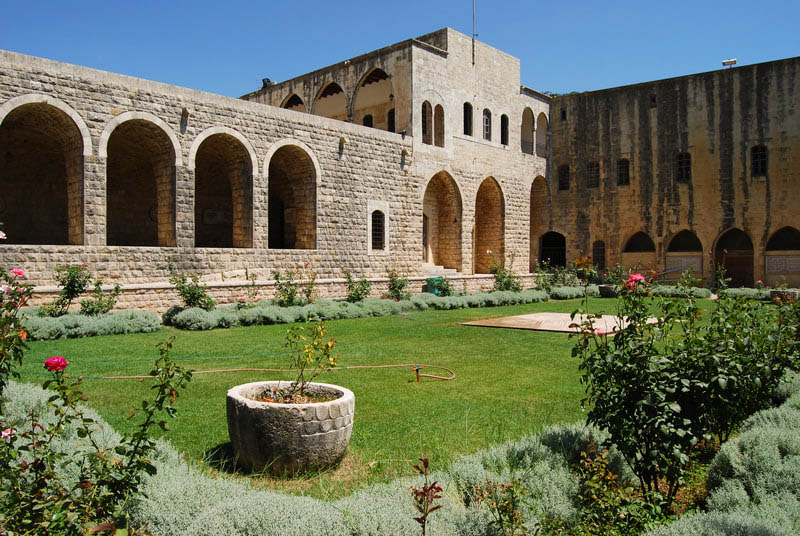
Wandering through the gardens, you’ll notice how the landscaping subtly mirrors the palace’s architectural harmony. It’s a design that feels both intentional and effortless, a reminder of how nature and art can complement each other.
These gardens feel like the soul of the palace — a space where history relaxes its formality, offering moments of quiet reflection amid all the grandeur.
Whether you’re snapping photos or simply sitting under the shade of a cedar, it’s a part of the palace that lingers with you long after you leave.
Best Time to Visit Beiteddine Palace
The timing of your visit to Beiteddine Palace can transform the experience entirely — whether you’re strolling through blooming gardens in spring, basking in summer’s festival energy, or soaking in the peaceful charm of autumn’s quieter days.
Best Seasons
- Spring (March to May): With the gardens in full bloom and temperatures comfortably mild, spring is the perfect time to wander through Beiteddine Palace’s courtyards and terraces. The colours and fragrant flowers add an extra dimension to the visit.
- Summer (June to August): If you're drawn to the energy of live music and cultural celebrations, summer is your season. The Beiteddine Festival transforms the palace into a vibrant hub of performances.
- Autumn (September to November): Crisp air, fewer crowds, and the golden light of fall/autumn create a serene setting to appreciate the palace’s architecture and tranquil gardens. This is the season for those who enjoy a quieter, reflective experience.
- Winter (December to February): While the palace is less busy, the mountain chill and potential road conditions require some preparation. However, the quieter atmosphere can make the visit feel more intimate and contemplative.
Which season offers the ideal experience? Spring strikes the ideal balance, with blooming gardens, pleasant weather, and fewer crowds — a perfect recipe for enjoying the palace at its finest.
Best Time of Day
Morning visits to Beiteddine Palace are often the most rewarding. The soft light enhances the beauty of the courtyards and gardens, and the air is still cool and refreshing, making it the perfect time to wander without the distraction of midday heat or larger crowds.
If you're drawn to photography, as am I, this is also when the light works its magic on the stonework and mosaics.
On the other hand, late afternoons offer a quieter experience, as the crowds thin and the golden hues of the setting sun bathe the palace in a warm glow.
Whether you’re an early bird or an evening explorer, Beiteddine’s atmosphere transforms beautifully with the time of day.
Getting to Beiteddine Palace
Reaching Beiteddine Palace, for me, is as much a part of the experience as the visit itself, with scenic routes winding through Lebanon’s Chouf Mountains.
Whether you drive, take a bus, or join a guided tour, the journey offers glimpses of quaint villages, cedar-dotted landscapes, and a preview of the history waiting to greet you.
By Car
Driving to Beiteddine Palace is the most flexible option, offering you the freedom to stop and soak in the stunning views along the way.
From Beirut, it’s roughly a 45-minute drive via the Beirut-Damascus Highway, with clear signs leading you toward Deir El Qamar and Beiteddine. Parking is available near the palace.
Public Transport
Reaching Beiteddine Palace by public transport is an adventure in itself and perfect for travellers, like me, looking to save money.
From Beirut, hop in a shared taxi or on a bus heading toward Deir El Qamar. Once there, you’ll need to switch to a local taxi for the short ride up to Beiteddine.
It’s not the fastest route, but it’s a chance to experience Lebanon’s local transport system and maybe even pick up a few travel stories along the way.
Guided Tours
Opting for a guided tour to Beiteddine Palace is a hassle-free way to explore this gem. Tours include transportation from Beirut, making the journey both comfortable and informative.
With expert guides bringing the palace’s architecture and history to life, you’ll uncover details you might otherwise overlook. Plus, tours are usually offered in multiple languages, including English, French, and Arabic.
For a well-rounded experience, consider a tour that also includes Deir el Qamar and the Chouf Cedars, like the Deir el Qamar - Beiteddine Palace - Chouf Cedars From Beirut tour.
➡ Click here to book the Deir el Qamar - Beiteddine Palace - Chouf Cedars From Beirut tour
What to Expect When Visiting Beiteddine Palace
A visit to Beiteddine Palace is like stepping into a time capsule — one moment you’re admiring intricate mosaics, and the next, you’re strolling through gardens that feel plucked from a storybook. It’s a blend of history, art, and breathtaking mountain views wrapped in one unforgettable experience.
Here's what you need to know.
Entrance Fees and Ticketing
Admission to Beiteddine Palace is typically US$10 per person, which includes access to the gardens, courtyards, galleries, and museum.
Discounts are available for groups of 10 or more (US$7 per person), as well as students (US$5) and seniors over 65 (US$7) with valid ID.
Additional fees may apply for guided tours or special exhibits, ranging from US$2 to $20 depending on the activity.
Opening Hours
Beiteddine Palace welcomes visitors daily, except Mondays.
From April to October, it's open from 9:00 AM to 6:00 PM, while winter hours (November to March) are slightly shorter, from 9:00 AM to 4:00 PM.
Always check ahead for changes, especially during special events or holidays.
Explore More: Nearby Attractions
Beiteddine Palace isn’t the only treasure in the Chouf region. Just a short drive away, you’ll find charming towns, lush cedar forests, and other historical sites that expand your journey.
Make the most of your daytrip by exploring these nearby sites.
Deir El Qamar
Just a stone's throw from Beiteddine Palace, Deir El Qamar is a picturesque village.
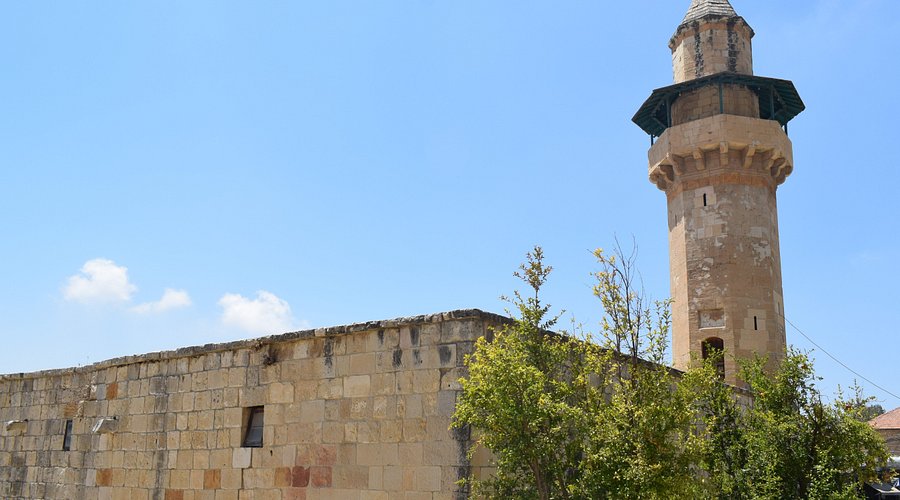
Wander its cobbled streets, lined with traditional stone houses and courtyards. Don’t miss the historic Fakhreddine Mosque, one of Lebanon’s oldest, and the grand Serail, a reminder of the village's former role as a political hub.
For a moment of quiet, relax in the central square and soak in the timeless atmosphere of this beautiful mountain village.
Moussa Castle
Add to your daytrip with a visit to Moussa Castle, a labour of love built single-handedly by Moussa Abdel Karim Al Maamari over decades.

The castle is filled with exhibits that range from traditional Lebanese artefacts to a quirky collection of weapons. Its dramatic location and backstory make it a memorable stop near Beiteddine Palace.
Chouf Cedars Reserve
A short drive from Beiteddine Palace, the Chouf Cedars Reserve offers a refreshing escape into nature.
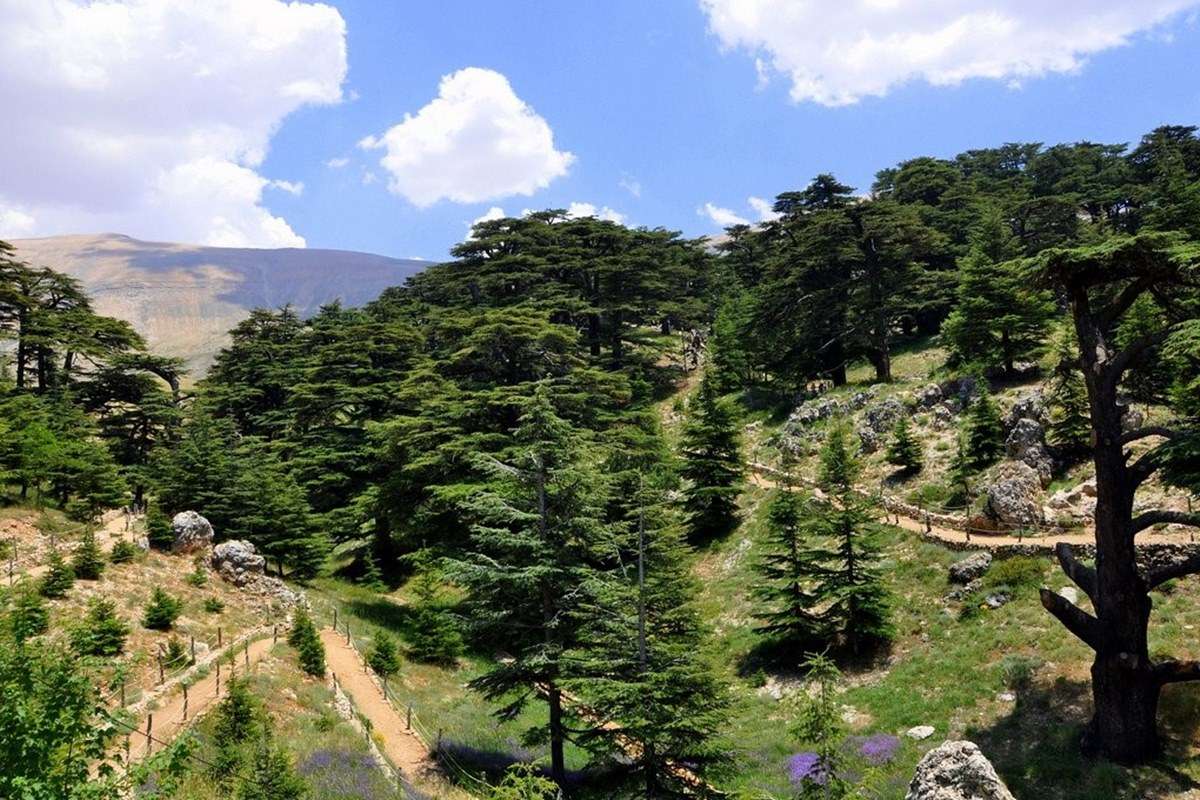
Home to one of Lebanon’s last remaining cedar forests, it’s the perfect complement to a day exploring history — an opportunity to breathe in fresh mountain air and walk among the ancient trees that are a symbol of the nation’s heritage.
Top Tips for Visiting Beiteddine Palace
Make the most of your visit with practical advice to enhance your experience.
Here’s what to keep in mind.
Arrive Early
The palace can get crowded, especially during peak tourist seasons.
Arriving early not only avoids the rush but also allows you to explore the grounds at a leisurely pace in the cooler morning hours.
Dress Comfortably
Exploring Beiteddine Palace means wandering through courtyards, staircases, and gardens, so comfortable shoes and breathable clothing are your best friends.
While there’s no strict dress code, per se, modest attire is appreciated, especially if you plan to visit nearby cultural sites (such as Fakhreddine Mosque).
Explore the Hidden Details
Don’t rush through the palace.
Take time to notice the smaller details, like the intricate Arabic calligraphy, the mosaic patterns, and even the wear on the steps that reveal the history of those who walked there before you.
Ask Questions
If a guide is available or you’ve booked a tour, don’t hesitate to ask specific questions about the architecture, restoration work, or local legends surrounding the palace.
It adds depth to your experience.
Consider Photography Etiquette
The intricate mosaics, grand courtyards, and stunning views at Beiteddine Palace make it a photographer's dream.
While photography is allowed, avoid using flash around delicate artefacts, especially in the museum areas.
Time Your Photos
If you're into photography, consider the angle of the sunlight throughout the day.
Early morning or late afternoon often offers the best lighting for capturing the courtyards and surrounding scenery.
Respect the Heritage
As with any historical site, refrain from touching artefacts, climbing on structures, or leaving litter behind, to help preserve the palace for future visitors.
Look out for Events
Beiteddine Palace often surprises visitors with unique cultural experiences.
Beyond its renowned summer festival, you might stumble upon traditional music and dance performances or even wine-tasting sessions that celebrate Lebanon's rich culinary heritage.
Some days, the palace hosts workshops on Lebanese calligraphy, mosaic-making, or local crafts — perfect for travellers seeking a hands-on connection to the culture.
Guided photography tours and exhibits, like the Emirs’ Horses, add further depth to your visit.
It’s worth contacting the Palace in advance to see what’s happening during your trip — you might just catch an unforgettable experience.
FAQs About Beiteddine Palace
Whether you're planning your first visit or just curious about the Palace, these frequently asked questions cover some things you might need to know.
Who should visit Beiteddine Palace?
Beiteddine Palace may interest a variety of visitors, each finding something unique to connect with.
History buffs can uncover the legacy of Emir Bashir II and the Ottoman influences etched into the palace walls, while architecture lovers will lose themselves in the mosaics, domed ceilings, and intricate carvings.
Families and day-trippers from Beirut will enjoy the expansive courtyards and tranquil gardens, offering space to roam and relax.
Photographers will find beauty in every detail, from the ornate reception halls to the views of the Chouf Mountains, while cultural explorers can dive into Lebanon’s artistic and spiritual heritage.
Whether you're there for the stories, the design, or the serene escape, Beiteddine Palace offers something worth remembering.
What is the history of Beiteddine Palace?
Beiteddine Palace was built by Emir Bashir Shihab II in 1788 → constructed over 30 years as a summer residence → later became an Ottoman administrative centre after the Emir’s exile → served as Lebanon’s presidential summer home → heavily damaged during the Lebanese Civil War → restored in the late 20th century and remains a cultural landmark today.
What is the Beiteddine Palace phone number?
You can contact Beiteddine Palace at +961 5 500 077 for inquiries about tickets, events, or general information.
Are there restaurants near Beiteddine Palace?
Yes, there are several dining options near Beiteddine Palace to suit different tastes.
La Paletta is highly rated for its delicious pizzas and cosy Italian vibe, making it a favourite among visitors. For those seeking a scenic meal, the Mir Amin Palace Terrace Restaurant offers both local and international cuisine with a view to match. If stunning vistas are your priority, Beyt el Jabal boasts breathtaking panoramas, though the food reviews are mixed.
Whether you're looking for a hearty lunch or a quick bite, these spots provide options that may suit your taste.
Is Beiteddine Palace suitable for solo travellers?
Absolutely!
Beiteddine Palace is a great destination for solo travellers (like me). Its calm courtyards, stunning architecture, and rich history offer plenty to explore at your own pace.
Whether you’re into photography, history, or simply enjoying quiet moments in beautiful surroundings, the palace provides a reflective experience.
Plus, its proximity to other attractions like Deir el Qamar and the Chouf Cedars Reserve makes it easy to plan a solo day trip.
Conclusion: Why Beiteddine Palace Is Worth the Visit
Nestled in the Chouf Mountains, Beiteddine Palace is a journey into Lebanon’s soul. From its grand courtyards and intricate mosaics to the lush gardens and mountain views, every corner reveals a layer of history, artistry, and cultural pride.
Whether you're a history buff, a day-tripper, or simply someone seeking a peaceful escape, Beiteddine Palace offers a rich experience. It’s a place where the past and present blend seamlessly, reminding us why Lebanon’s heritage continues to capture attention.
